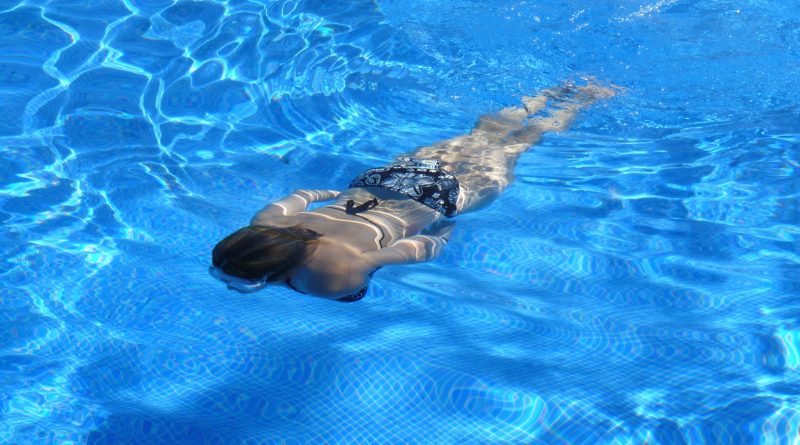Fitness in swimming
Swimming helps to give increased mobility as well as building tissue to support joints and reduce muscular degeneration. But to derive real health and fitness benefits from swimming you need to find the right balance between effort and release. Swimming without strain does not mean swimming without effort, it means applying effort in the right way. A general rule applies to all the strokes: before every propulsive movement, there is a non-propulsive movement. In other words, you need to let go before applying effort. Many swimmers use too much energy in the non-propulsive phases of the stroke and too little in the propulsive phases. This not only sabotages the quality of the propulsive movements but often leads to a build-up of strain and can result in serious injury.
Breaststroke
Performed well, breaststroke will tone the muscles and improve flexibility, especially in the hips. Conversely, with poor technique, breaststroke is the stroke most likely to cause strain. Some swimmers crane their necks back to keep their faces out of the water, while others place their faces in the water but aggressively snatch their heads back with each movement of their arms. Effective and healthy breaststroke requires putting the face in the water and bringing it out in a free and relaxed way. The following series of steps break down the actions of legs and arms, taken from the non-propulsive starting position of the glide, with arms extended ahead and legs together.
1. The legs bend at the hips so that the knees are brought up towards the chest, with the legs pointing backward shoulder-width apart. This movement coordinates with the sweeping back of the arms.
2. The ankles, knees, and hip joints rotate so that feet are turned outward at the width of the hips. Avoid starting this action from the knees i.e. turning the knees out and keeping the feet together.
3. The thrust is generated through the hips into the thighs and knees. The legs should be directed evenly outwards and then immediately squeezed together. The kick should be symmetrical: an uneven kick in which one leg turns outward more than the other (a ‘screw kick’) can twist the hip and injure the spine. Pushing the heels back with excessive force can hurt the lower back.
Front Crawl
A common fault is to use of too much muscular effort when the arms move through the air (the recovery) and not enough when they pull through the water. Excessive effort on the non-propulsive phase of the arm action is not only a waste of effort; it makes it harder to control the underwater arm action.
Traditional swimming coaching encourages a high, pitched elbow position for recovery. Exaggerating this action can put the shoulders under strain. It is more comfortable for the arm to rotate gradually as it pulls through the water so that the hand exits the thumb first, then bends the elbow as the arm comes forward over the water’s surface.
Under the water, the elbow bends as the arm pulls back towards the body. This action creates the S-shaped pull spoken of in technical swimming manuals. On no account should one deliberately try to create an S-shaped pull. The attempt to do so has a distorting effect on one’s orientation and disrupts the direction of the stroke. The main function of the legs is to keep the body balanced on both a horizontal and lateral axis. Kicking too fast or too vigorously can create an unbalanced stroke.
Helpful Hints
1. Practice shifting your balance to either side, starting with the hips.
2. Learn how to swim balanced to either side, kicking continuously.
3. On land, practice the arm movements, noting how the arm swivels naturally in the shoulder joint.
Backstroke
Poor technique in backstroke can lead to shoulder strain and even tendonitis, which usually result from tensing the arm during the underwater phase of the stroke. The arm should never be held rigidly but should be flexible and slightly bent at the elbow at all times.
Butterfly
In the butterfly, propulsion is created by both legs and arms. Inexperienced swimmers who attempt the stroke often pull back their arms violently and throw them back into the water. This is unnecessarily strenuous, causes undue turbulence, and can result in pain in the back and shoulders. The key to an efficient, streamlined butterfly stroke is to learn the dolphin-like undulation of the torso and the correct timing of arms and legs.
As in the crawl, more effort should be put into the pull, which starts once the arms have returned to the water, than the recovery. The legs work together from the hips, held firmly but not stiffly together, and free at the knees and ankles. The legs kick twice for every arm cycle. To maximize the benefits of good streamlining the head should remain below the surface for two arm cycles, with a breath being taken every two strokes.
Fair Weather Swimmers
For people with busy lives who do not pursue a regime of regular exercise, a holiday can provide the time to feel guilty about a year of inactivity. Access to the sea or to a good swimming pool and fitness activities can spur holiday-makers to a sudden burst of physical activity. Swimming is seen as offering the chance to cool down, sport new swimwear, tone muscles and improve general fitness. Unlike weight training or high-impact aerobics, swimming is regarded as a safe vocational activity, with little risk of injury attendant it. But a week of thrashing up and down in the water cannot make up for a year of inactivity and often does more harm than good.


